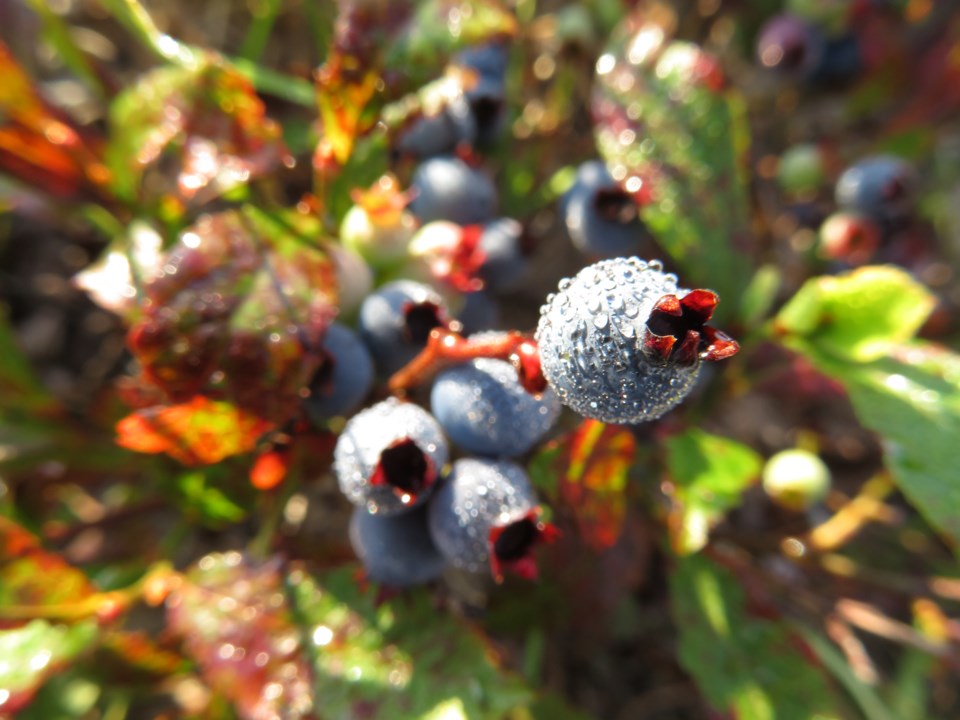From the archives of the Sault Ste. Marie Public Library:
Algoma is known for its wild blueberries: a bounty ripe for the picking in late summer.
1928 was a particularly good blueberry year, with even the Globe out of Toronto describing the “bumper” farmer’s market. Blueberries were described as “plentiful,” priced at 25 cents per box.
That year also marked the start of speculations locally that a more farmed approach to blueberries would yield better crops, as opposed to just foraging for them in the wild. In October, an article in the Sault Daily Star asked, “Can the wild Algoma blueberry be improved?” The writer speculated that cultivating blueberries might make them larger, easier to pick, and more appealing to consumers.
Nevertheless, the article noted that wild blueberries would often “[grow] to enormous size, in many cases being found as large as the ordinary cherry.”
Berries could be found in “almost every nook and cranny of the district,” from swamps to rocky hills to the cool, dark forest. The Sault Daily Star noted some places of particular abundance: the area surrounding Agawa Bay, Mile 68 on the ACR . . . and on someone’s private property, who the paper went so far as to name. The article talked about “blueberries as big as marbles” that would crunch underfoot, and how “the ground [was] blue with the berries in flats acres wide.”
The article also noted the lucrative business of berry picking, with “many a truckload of berry pickers,” mainly Indigenous people, spending entire days harvesting. These berries would sometimes go as far as Toronto, where the paper noted that they would be “kept in cold storage and served fresh in restaurants and hotels” for a pretty price.
In 1947, blueberries in Northern Ontario were in the news again, this time in an article from the Globe and Mail. The article described the blueberry business as “a bonanza.” People of all ages would come to pick intensively over the course of blueberry season – not just because they loved berries but also for the money it could provide. Blueberry picking in the north apparently brought in thousands of dollars a week. One picker quipped to the reporter, “Who says money don’t grow on bushes?”
In particular, the Globe and Mail highlighted the highway between Sault Ste. Marie and Sudbury, where 40 families lived in “a tented village.” They camped out for the duration of berry season, cooking and eating outside. Again, the pickers were mainly Indigenous and ranged from toddlers to grandparents. They filled picking baskets and returned to crowds of buyers competing to purchase the freshest berries.
From there, the buyers would ship the berries to southern Ontario, generally by car or by train. According to one of the people interviewed, in a year, “the north country [shipped] a blueberry crop worth more than $1,000,000.” Much like in 1928, the berries went down south to be kept in cold storage, processed, and resold.
Regardless of their ultimate destination and fate, however, blueberries sparked a yearly hum of excitement and activity in the “blueberry belt” of Ontario.
Each week, the Sault Ste. Marie Public Library and its Archives provides SooToday readers with a glimpse of the city’s past.
Find out more of what the Public Library has to offer at www.ssmpl.ca and look for more Remember This? columns here
